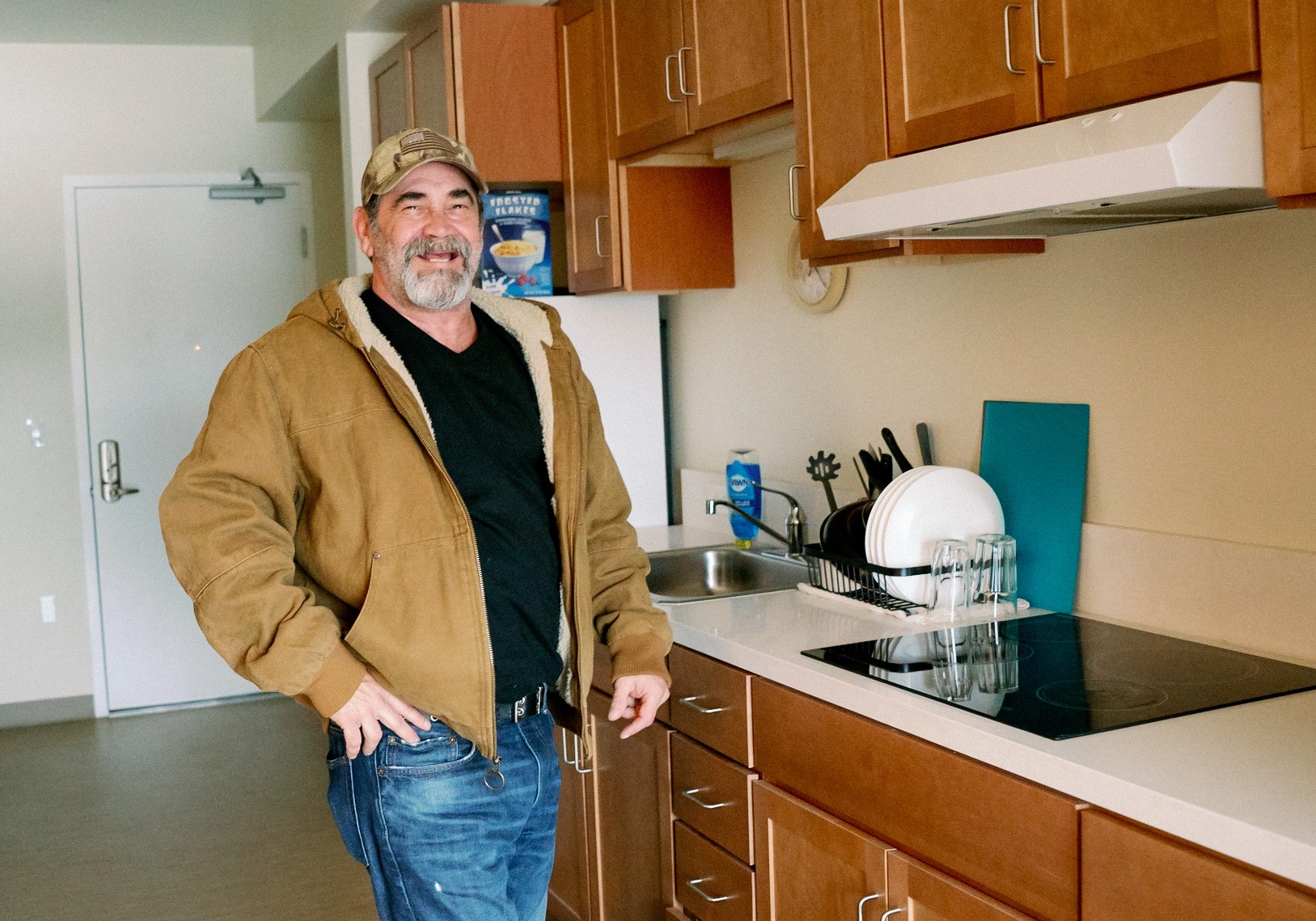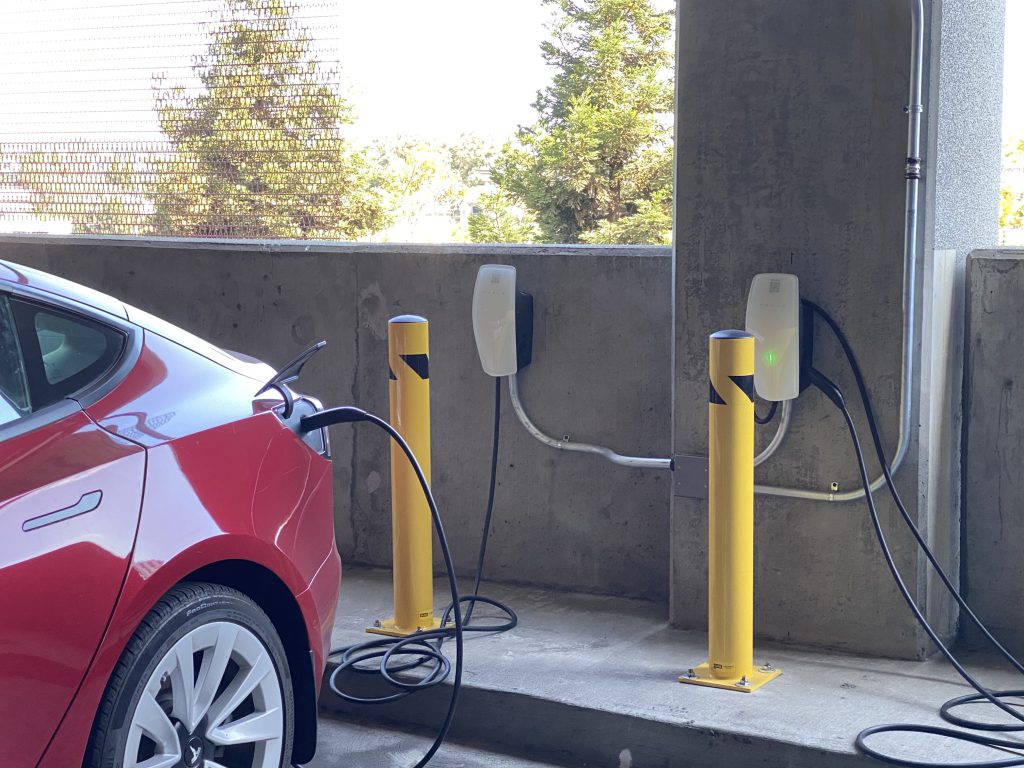Lonnie Ray has always enjoyed cooking.
“Even while in the camp, I had my little stove. I used to work miracles with that thing,” he says. “I learned everything from [celebrity chef] Gordon Ramsay. I’ve watched every single episode of ‘Hell’s Kitchen.’”
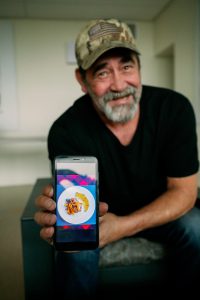
Lonnie Ray enjoys cooking in his very own kitchen.
Ray was one of the first people to move into Berkeley Food & Housing Project’s Hope Center when it opened in October. The six story, 150,000 square foot building at 2012 Berkeley Way was designed to serve the city’s very low-income, disabled and chronically homeless population. It offers on-site support services, a 32-bed temporary shelter, a 12-bed transitional housing dormitory for veterans, and 53 permanent supportive housing studio apartments.
Since moving into a studio apartment, Ray has continued to pursue his passion for cooking – in his very own kitchen. “It feels like home now. I’ve been getting creative and having fun. I got a rosemary chicken recipe that you would die for, but I can’t give out my secrets,” he says with a playful smile.
The Hope Center plays an important part in Berkeley’s effort to find permanent and stable housing for the estimated 1,000 residents who are experiencing homelessness within its borders.
“The opening of the Hope Center would not have been possible without the tremendous support from our community and valued partners, including Sutter Health,” says Berkeley Food and Housing Project CEO, Calleene Egan. “This milestone serves as a testament to our collective effort to end the crisis of homelessness and underscores the power of collaboration in providing individuals with a safe and stable environment they can call home. Partnerships like the one we have with Sutter Health are crucial in addressing the complex and interconnected challenges with health and housing.”
“Sutter Health is proud to invest in the construction and operation of the Hope Center,” says David Clark, area CEO for Sutter East Bay Hospitals. “We are acutely aware of the medical and behavioral health challenges housing insecurity creates or worsens for many people in Berkeley. By working together to find solutions, we can improve community health and have a positive, powerful effect on people’s lives.”
Building Design Supports Dignity and Wellness
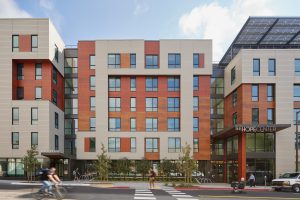
Berkeley Food & Housing Center’s Hope Center. Photo by Bruce Damonte.
The Hope Center not only provides safe shelter, it’s a place where people can begin their journey out of homelessness in a comfortable, warm, and nurturing environment. In fact, the building offers residents and visitors abundant natural light, warm colors, lush green spaces, and its common areas encourage connection, rest, and restoration.
Feeding the body may be as important as feeding the soul at the Hope Center. Its sunny, commercial-grade kitchen offers a free daily hot meal in the cheerful communal dining room to all center residents, as well as residents of the BRIDGE affordable housing units next door. The Community Meal has been running for 50 years since the inception of the organization in 1970 and is open to anyone in the community.
Additional services offered at the Hope Center include training, counseling, classes, laundry, and healthcare services. BFHP provides permanent housing residents with support services such as case management, benefits advocacy and life skills counseling which is helpful for people who have experienced homelessness for years and may need extra support to adapt to living indoors.
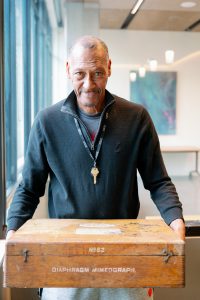
Photo of Hope Center resident James V. with an antique mimeograph machine.
James V., an antiques aficionado and jewelry maker, is settling in and adjusting to living indoors. James says he’s grateful to the Hope Center for providing him with a permanent, safe home. “I’m very happy to be here,” he says. “I was on the streets for 17 years. It’s been a rough road, but God is good.”
Each year, not-for-profit Sutter Health gives millions of dollars in support and services to the communities it serves. Every three years, an extensive needs assessment is done to determine the community’s most pressing needs. Sutter partners with local organizations that address these prioritized health needs to improve community health.
Read more about Sutter’s Community Benefit work.

